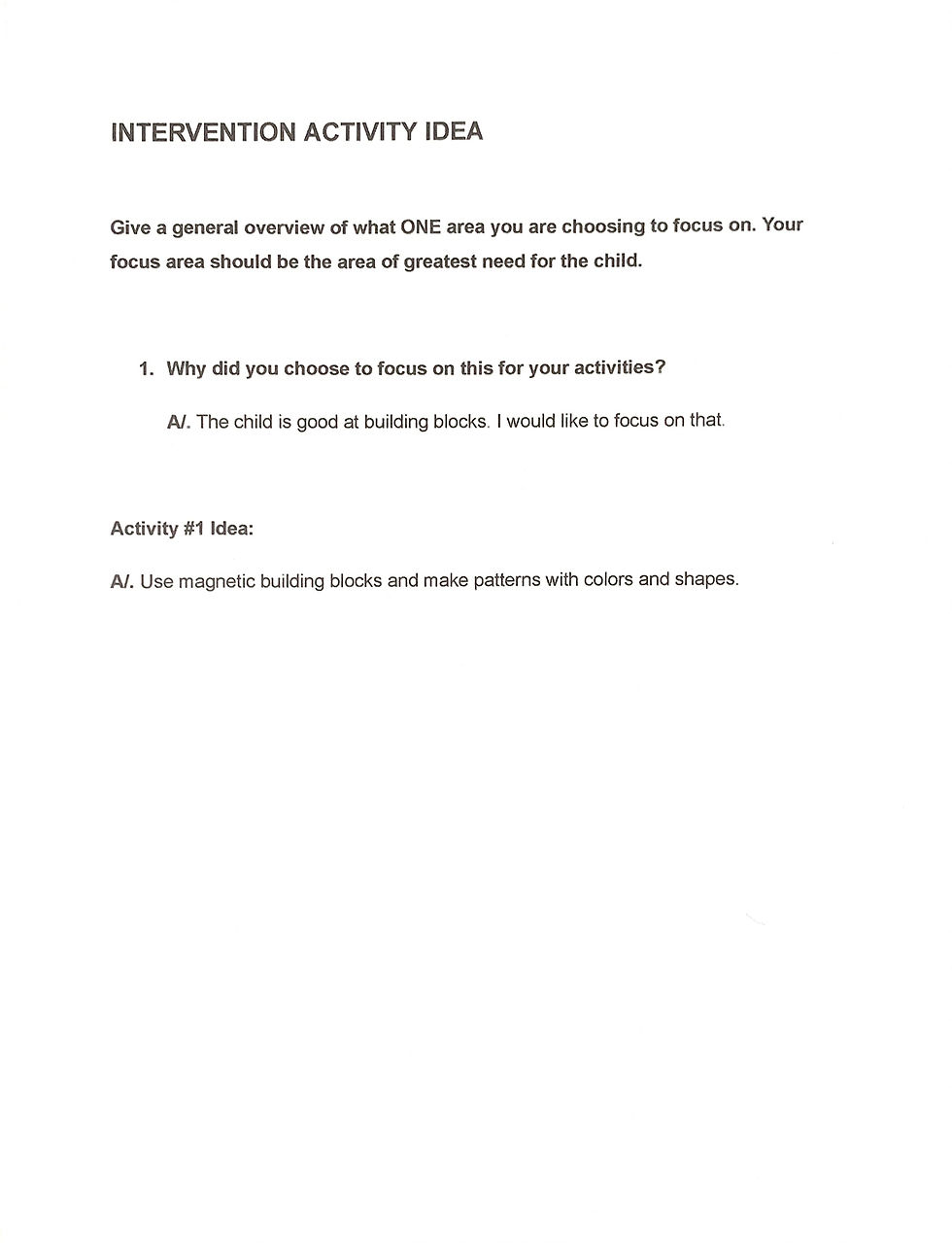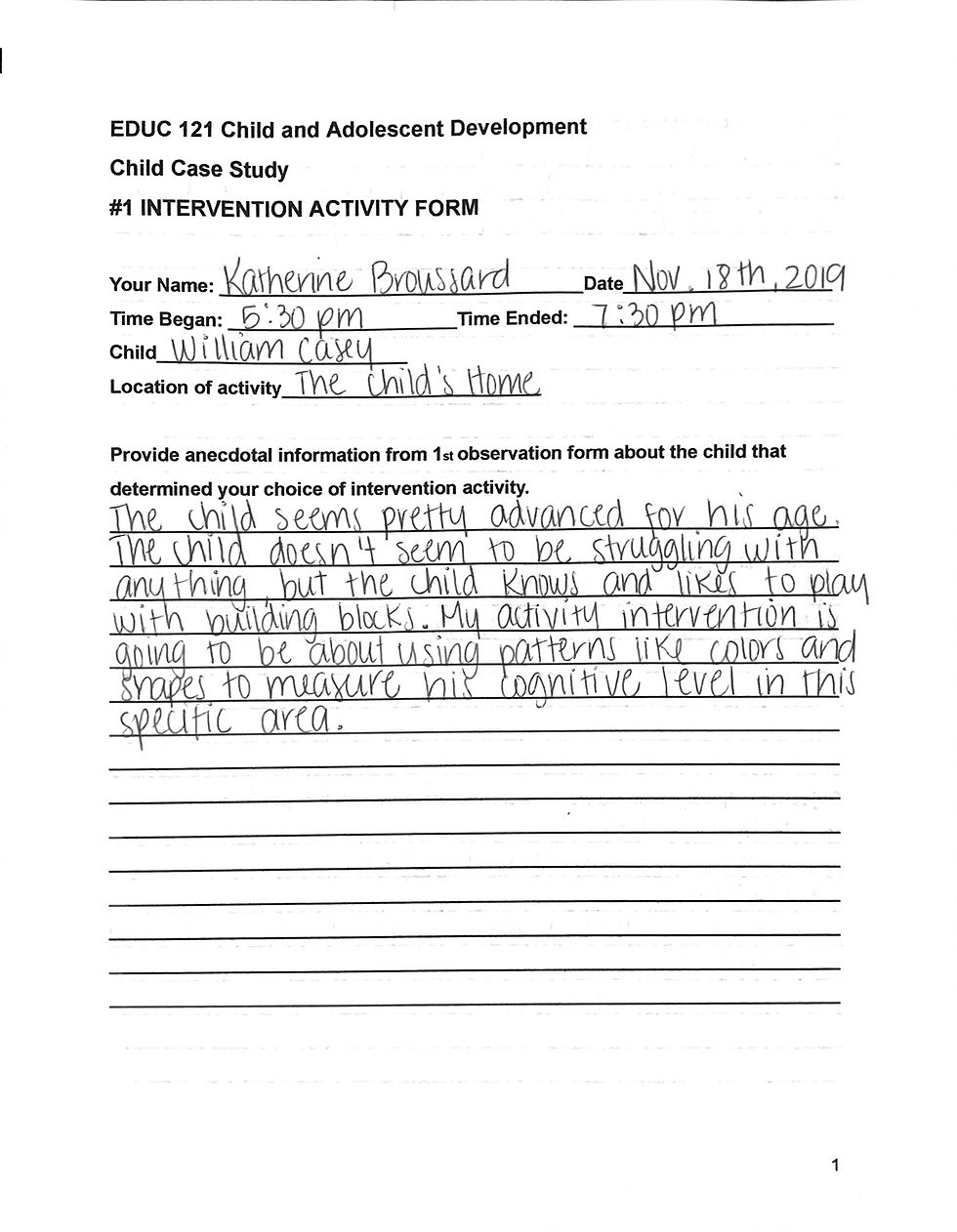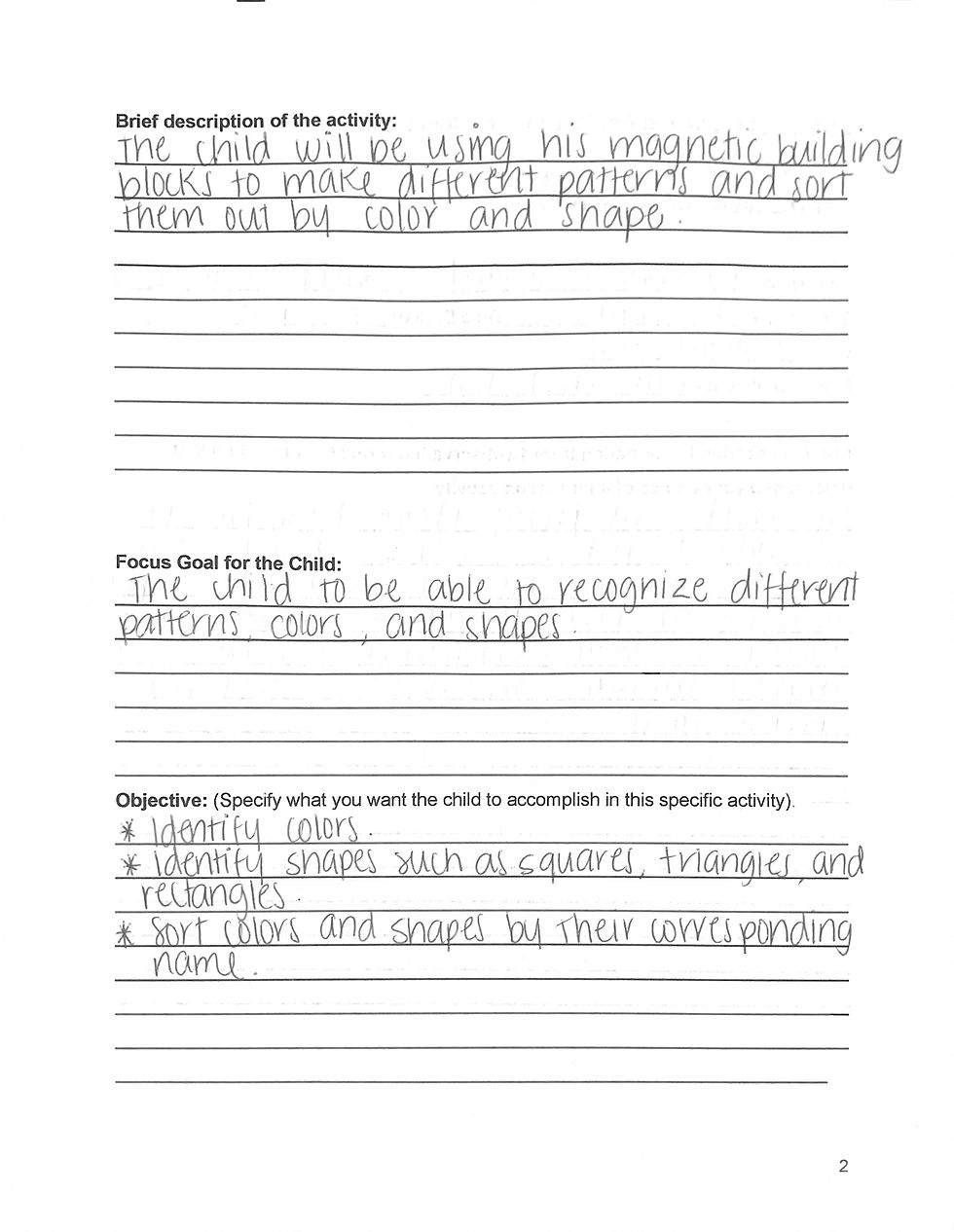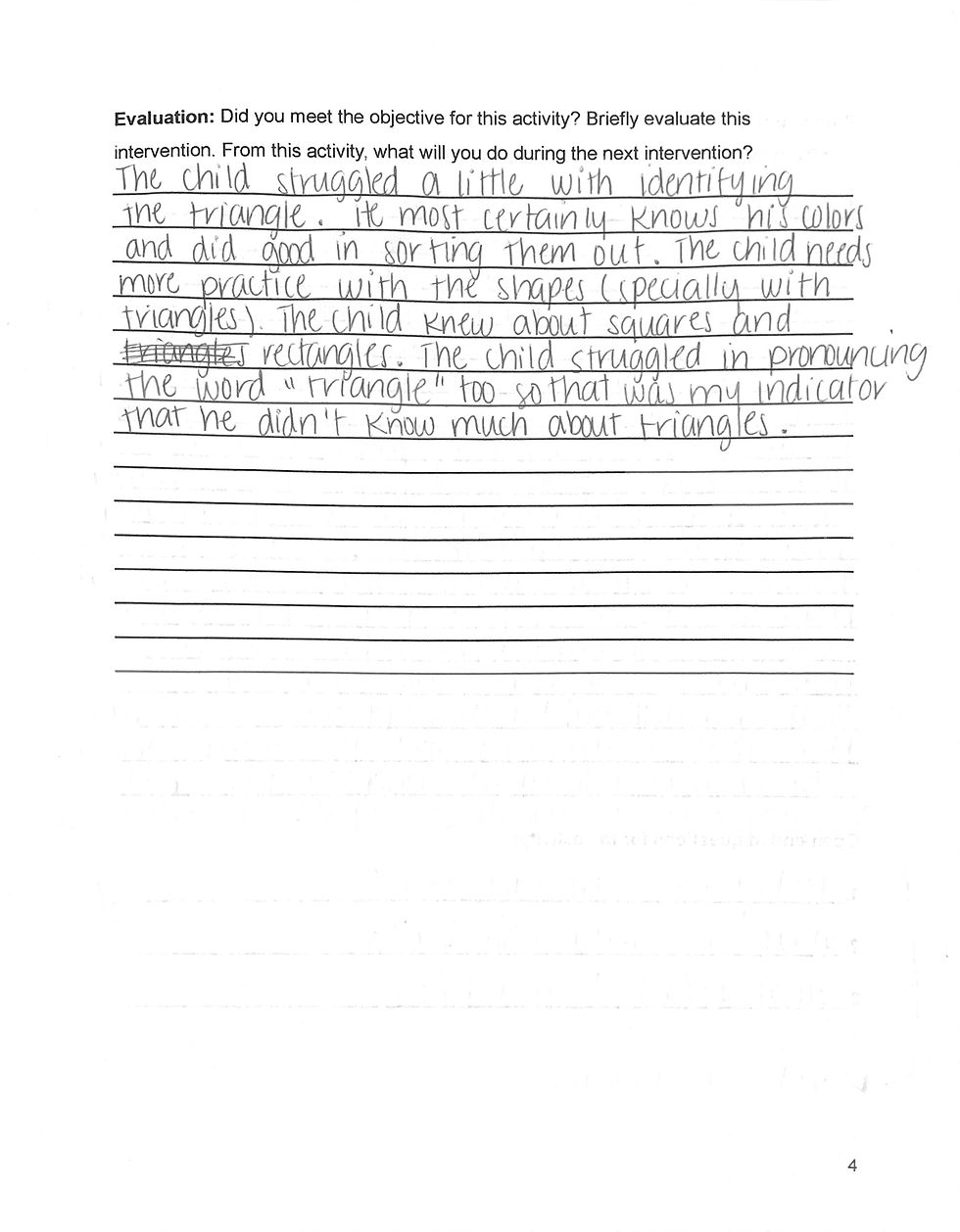

"Every child deserves a champion – an adult who will never give up on them, who understands the power of connection and insists that they become the best that they can possibly be."
InTASC Standard:
Standard #1: Learner Development
The teacher understands how learners grow and develop, recognizing that patterns of learning and development vary individually within and across the cognitive, linguistic, social, emotional, and physical areas, and designs and implements developmentally appropriate and challenging learning experiences (InTASC, 2013).
Brief Description of Evidence:
During my fall semester of 2019 in my EDUC 121-Child & Adolescent Development course, I did a Child Case Study on a two-year-old child. I did two observations and one assessment while working with the family in setting developmentally appropriate goals for the child. In doing so I learned about the culture and the characteristics of the child. I got a chance to see the social, physical, emotional, and cognitive development as well as language over two days. Once I observed the strengths, I came up with a plan which involved the child in using magnetic building blocks with different colors and shapes. The activity involved recognizing and identifying the colors and shapes. I wanted to challenge the child in a different area such as making patterns with building blocks. This allowed me to set goals for the parents and the child.




Analysis of What I Learned:
By conducting this case study, I understood how kids developed over time through assessments and observations, I have gained knowledge of the five main areas of development which are social, physical, emotional, language, and cognitive development. I found that the child learns to cooperate and solve problems by getting along with others via social, emotional development. I learned when the child moved physically; he became more active in the area of gross/ motor development. Cognitive development makes it possible for the child to think critically. I noticed how the vocabulary of the child started to grow, and the child asked more questions during language development. I provided the child with materials that had multiple uses to expand his creativity. The material that I provided was inexpensive since the child already had them. We met twice a week. Since I have an excellent relationship with the mom, it was quite easy for me to do the observations. If I had any questions or concerns regarding her son, she was very understanding and helped me create a plan for her child to achieve his goals.








How This Artifact Demonstrates my Competence on the InTASC Standard:
I am competent in this standard because I understand the importance of a child’s development through spending time and one-on-one interaction. I understand how important it is to make sure that the family is included in the decision-making of all aspects of the development of their child. By interacting with the child at his home and developing activity with building blocks made me think that John Dewey’s “Hands-on Approach” (Staff, 2021) was the best match to be my theorist in this child case study. John Dewey believed that human beings learn through a 'hands-on approach by interacting with their environment to adapt and learn, which was seen in this case study. This child case study assignment helps to promote the cognitive, linguistic, social, emotional, and physical areas which allowed me to implement appropriate and challenging learning experiences for the child I observed and worked with.